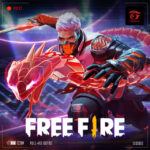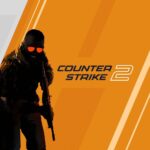
Valorant
All trademarks belong to their respective owners.Popular Now
 The Legend of Zelda
The Legend of Zelda
 BeamNG.drive
BeamNG.drive
 Stumble Guys
Stumble Guys
 Candy Crush Saga
Candy Crush Saga
 Toca Boca World
Toca Boca World
 Free Fire
Free Fire
 Counter-Strike 2
Counter-Strike 2
 Among Us
Among Us
 FIFA 23
FIFA 23
 Schedule I
Schedule I
Master the Agents: Unlocking Valorant’s Strategic Depth Through Character Abilities
In Valorant, the gunplay is lethal and precise, but it’s the diverse roster of Agents and their unique abilities that truly unlock the game’s immense strategic depth. Each Agent falls into one of four distinct roles – Duelist, Controller, Initiator, or Sentinel – and brings a specific set of tools to the battlefield, influencing team composition, map control, and overall strategy. Simply having good aim isn’t enough; understanding how to effectively use your chosen Agent’s abilities in conjunction with your team’s utility, and anticipating enemy Agent abilities, is the cornerstone of high-level Valorant gameplay. Mastering these characters transforms a chaotic firefight into a calculated chess match, where every smoke, flash, and wall can turn the tide of a round.
The Four Agent Roles: Defining Your Playstyle
Valorant Agents are categorized by their primary function, guiding players on their typical responsibilities:
- Duelists (Entry Fraggers):
- Purpose: Primarily focused on getting first blood and creating space for the team to enter a site. They often have abilities that allow for aggressive pushes, self-sufficiency, or quick escapes.
- Examples: Jett (Dash, Updraft for aggressive entry/escape), Phoenix (Flash, Wall, Hot Hands for clearing angles and self-heal), Reyna (Leer for blinding, Dismiss/Devour for healing/escaping after a kill), Raze (Boom Bot for clearing corners, Paint Shells for area denial, Showstopper ultimate for high damage).
- Playstyle: Aggressive, confident in gunfights, often leading the charge onto a Spike site. They need to create opportunities for their team.
- Controllers (Site Manipulators/Vision Deniers):
- Purpose: Focused on manipulating the map and denying enemy vision using smokes, walls, and other utility. They dictate the flow of a push or hold, isolating areas and creating safe passages.
- Examples: Omen (Dark Cover smokes, Shrouded Step for teleporting, Paranoia for blinding), Brimstone (Sky Smokes, Incendiary for area denial, Orbital Strike ultimate for clearing sites), Viper (Poison Cloud, Toxic Screen for large area denial, Viper’s Pit ultimate for taking over a site).
- Playstyle: Strategic, often playing from a safer position, dictating where and when fights occur through their vision-blocking abilities.
- Initiators (Information Gatherers/Entry Support):
- Purpose: Designed to gather information about enemy positions, clear corners, and stun/displace enemies to set up their Duelists for entry. They typically initiate pushes.
- Examples: Sova (Recon Bolt for revealing enemies, Shock Bolt for damage/clearing corners, Hunter’s Fury ultimate for wall-piercing damage), Breach (Fault Line for stun, Flashpoint for blind, Aftershock for damaging through walls, Rolling Thunder ultimate for massive stun/displacement), Skye (Guiding Light for flash/recon, Trailblazer for recon/concussion, Regrowth for healing, Seekers ultimate for tracking enemies).
- Playstyle: Proactive, leading pushes with their utility, working closely with Duelists to gain ground and eliminate threats.
- Sentinels (Defenders/Flank Watchers):
- Purpose: Specializing in holding sites, preventing pushes, and securing flanks. They use abilities to lock down areas, gather early information, and deny enemy pushes.
- Examples: Sage (Healing Orb, Barrier Orb for blocking pathways, Slow Orb for area denial, Resurrection ultimate for reviving teammates), Cypher (Trapwire for tripmines, Cyber Cage for one-way smokes, Spycam for recon), Killjoy (Turret for early warning/damage, Nanoswarm for area denial, Lockdown ultimate for site lockdown).
- Playstyle: Defensive, strategic in placing utility, focused on anchoring sites and preventing enemies from sneaking around.
Synergy and Counter-Play: The Heart of Valorant’s Meta
The true magic of Valorant’s Agent system lies in how these diverse abilities interact.
- Team Composition: Building a balanced team composition is crucial. A good team often has at least one Duelist for entry, one Controller for smokes, one Initiator for information, and one Sentinel for holding flanks or sites. However, meta shifts constantly, and unique compositions can emerge.
- Ability Combinations (Combos): The most effective plays often involve combining abilities from different Agents.
- Example: Brimstone’s Sky Smokes to block vision on a site entry, followed by Breach’s Fault Line to stun enemies behind cover, allowing Jett to dash in and secure kills.
- Example: Cypher’s Trapwires to alert of a push, combined with Killjoy’s Nanoswarms to deny the entry point, creating a deadly trap.
- Counter-Play: Every ability has a counter. Learning how to break Sage’s wall, shoot Sova’s Recon Bolt, or avoid Viper’s ult is just as important as knowing how to use your own abilities. This constant back-and-forth between using and countering utility is what makes Valorant so engaging.
- Economy Management: Players must decide which abilities to buy each round, balancing their need for utility with their weapon purchases. Sometimes, saving an ultimate for a crucial round is more impactful than using it immediately.
Mastering Your Agent: Beyond the Basics
- Know Your Map Interactions: Each Agent’s ability interacts differently with various Valorant maps. For instance, Omen can use Shrouded Step for specific teleports on Bind’s teleporters, or Jett can use Updraft to access high ground on Icebox.
- Practice Specific Lineups: Many Agent abilities (like Sova’s Recon Bolt or Brimstone’s Sky Smokes) have specific “lineups” that allow for pixel-perfect placements from a safe distance. Mastering these can give your team a huge advantage.
- Adapt to the Round: Don’t just use your abilities on cooldown. Learn to adapt to the flow of the round, the enemy’s pushes, and your team’s needs. Sometimes, holding onto a flash for a critical moment is better than using it pre-emptively.
- Watch Pro Players: Observing how professional Valorant players use their Agents’ abilities can provide invaluable insights and new strategies.
Valorant’s Agent system transforms it from a simple point-and-shoot FPS into a deeply tactical experience. By understanding the roles, mastering the abilities, and recognizing the power of synergy and counter-play, players can unlock their full potential and contribute significantly to their team’s path to victory. The battlefield of Valorant isn’t just about who has the best aim; it’s about who uses their Agent’s abilities most intelligently.
What’s an underrated Agent ability that you think more players should master in Valorant?
Rating
PROS
- Unique gameplay mechanics
- Diverse cast of agents
- Stunning graphics
- Well-designed maps
- Active developer support.
CONS
- Performance issues
- Limited game modes.